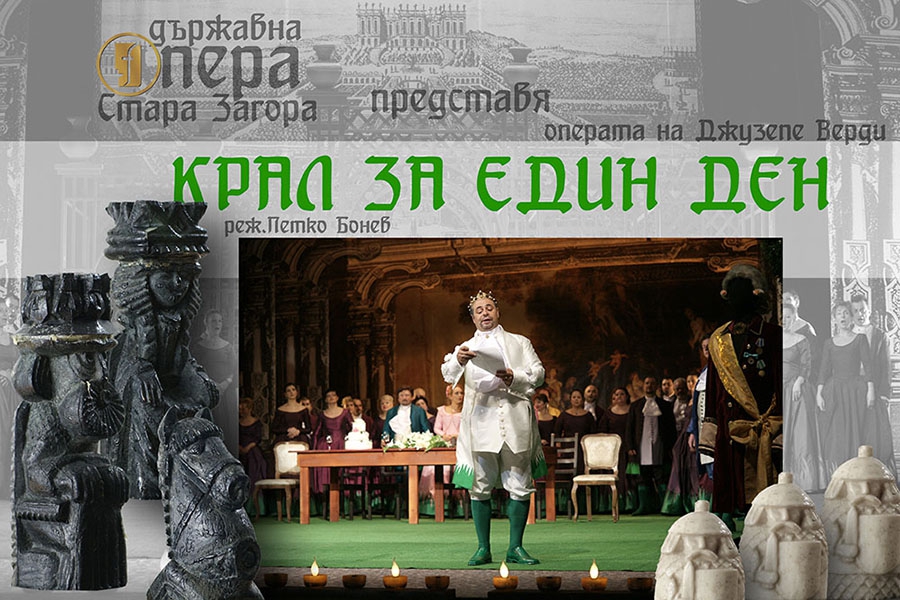On 23 January this year for the first time in Bulgaria State Opera – Stara Zagora presented Giuseppe Verdi’s comic opera “King for one day”, libretto – Felice Romani, based on the play “Le faux Stanislas” by Alexandre-Vincent Pineux-Duval. On 13 June the production will be guest on the stage of Sofia Opera and Ballet, which is a great honour for the entire team.
Director of “King for one day” is Petko Bonev, Director of State Opera – Stara Zagora, the musical direction is by Stefan Linev, conductor – Zdravko Lazarov, choreography – Alida Boneva. The original scenography is by Boris Stoynov, and the attractive costumes are project of Tsvetanka Petkova-Stoynova, chorus master – Mladen Stanev, concert master – Paulina Koleva.
In the roles you will see well-known names on the Bulgarian and international stage – Krum Galabov (Cavaliere di Belfiore), Daniela Dyakova (La Marchesa del Poggio), Rusalina Mochukova (Giulietta di Kelbar). With bright presence are also the soloists Ivaylo Yovchev (Edoardo), Evgeny Arabadzhiev (Barone di Kelbar), Dian Georgiev – guest performer (The Treasurer), Mark Fowler (Count Ivrea), Teodor Petkov (Delmonte).
…The year is 1733, and the place – Baron Kelbar’s castle near Brest, France. The Polish monarch, King Stanisław Leszczyński, a historical figure during the War of Succession, lost his throne after the Saxon invasion at the Battle of Poltav in 1709. He regained it in 1733, but was again deposed in 1736 and went into exile in France. The opera is set in 1733 when Stanislaw returned to Poland leaving a French officer, the Cavaliere di Belfiore, to impersonate him in France. Belfiore finds himself a guest of honour at the double wedding in the home of Baron Kelbar. The pretend King is taking advantage by all possible means of his newly acquired power, including also taking the role of matchmaker, confusing the plans for the arranged marriages. But at the end triumphs real love – between Cavaliere di Belfiore and the Marchesa del Poggio and between Giulietta di Kelbar (the Baron’s daughter) and Edoardo (the Treasurer’s nephew).
The opera was produced for the first time on 5 September 1840 at La Scala di Milano under the title “Le faux Stanislas”. In the beginning of June the same year Verdi’s young wife was taken ill with acute encephalitis and died at the age of 26. Two years earlier, in 1838 death had taken away his small daughter Virginia, and a bit later (exactly before the premiere of his first opera “Oberto”) – his son Iginio. The premiere of “Le faux Stanislas” failed. Verdi, broken by his great personal tragedy and the failure of the opera, broke off the contract with his impresario Francesco Merelli and swore to write not a single note ever more …
Only five years later (1845) in Venice, the opera “Le faux Stanislas” had a wonderful reception. It was played in 1846 in Rome and in Naples. With exceptionally beautiful music, interesting course of Love, wonderful ensembles and the happiest possible end – the second opera of the young Verdi is a fairy-tale kaleidoscope, in which all “colour glass splinters” (the characters) find their exact and harmonic place.

02 Jun 2014